Here We Are: My Friendship with Philip Roth
by Benjamin Taylor
Penguin Random House, 192 pp., $26.00
The Plot Against America
TV mini-series HBO
Created and written: David Simon and Ed Burns,
Executive producer: Joe Roth
The first time I read a book by Philip Roth, I read it from back to front. This was not out of some Hebraic atavism but rather sheer adolescent laziness. The brilliant novella that started the book, Goodbye, Columbus, brief as it was, struck this teenage reader as potentially too great an investment of time. The five stories that followed were far shorter and better tailored to my limited attention span. The very last, “Eli, the Fanatic,” was my starting point and the beginning of a rewarding half-century-long habit of reading Roth, anticipating his novels and, in the past couple of decades, interviewing him several times on NPR’s All Things Considered.
In the short story, the lawyer Eli Peck is chosen to act on behalf of his socially assimilated, suburban Jewish community in the fictional town of Woodenton, New Jersey, a town that has only recently permitted Jews the privilege of home ownership on its patch of the American Dream. The cause of the Jewish community’s alarm, which Eli Peck is charged with alleviating, is the arrival in town of a yeshiva. Eighteen kids straight from European displaced persons camps live there and study Talmud. Their provisions are brought into town by a bearded, black-hatted man in a long black coat—the very image of the Jew that Woodenton’s Protestant elite had in mind when they wrote restrictive covenants into the deeds to their suburban palaces. Peck’s mission is to negotiate and alter the Orthodox factotum’s appearance when he goes into town, a mission inspired not so much by gentile criticism as by Jewish anticipation of it, and by the community’s sense that the yeshiva is a threat to its feeling of having arrived. As a friend of Peck’s exclaims: “Eli, in Woodenton, a Yeshivah! If I want to live in Brownsville, Eli, I’ll live in Brownsville.”
Here, in my first encounter with Roth, were the questions that would recur over and over. How Jewish? How Jewish was too Jewish? How heavy on the Jewish side was too light on the American side? These questions permeate HBO’s recently aired adaptation of Roth’s 2004 counterfactual historical novel, The Plot Against America. In Roth’s fictional America, Charles Lindbergh runs for President against FDR in 1940, wins, keeps the United States out of World War II and makes it friendly to Nazi Germany and overtly anti-Semitic. First, there is the tension between Philip’s father (in the novel, the narrator is named Philip Roth, with his parents’ and brother’s names also matching the real ones, but HBO renames the Roths the Levins), who is fiercely pro-FDR and anti-Lindbergh, and the pro-Lindbergh Rabbi Lionel Bengelsdorf. Rabbi Bengelsdorf, of Roth’s Newark, New Jersey, is up from South Carolina and obsessed with the Jews’ need to be, and to be seen as, unequivocally loyal Americans, to feel more affinity with the concerns and values of farmers in rural mid-America than of Jews in Eastern Europe. This, as the mass slaughter is getting underway in what isolationists like the rabbi call “Europe’s war.”
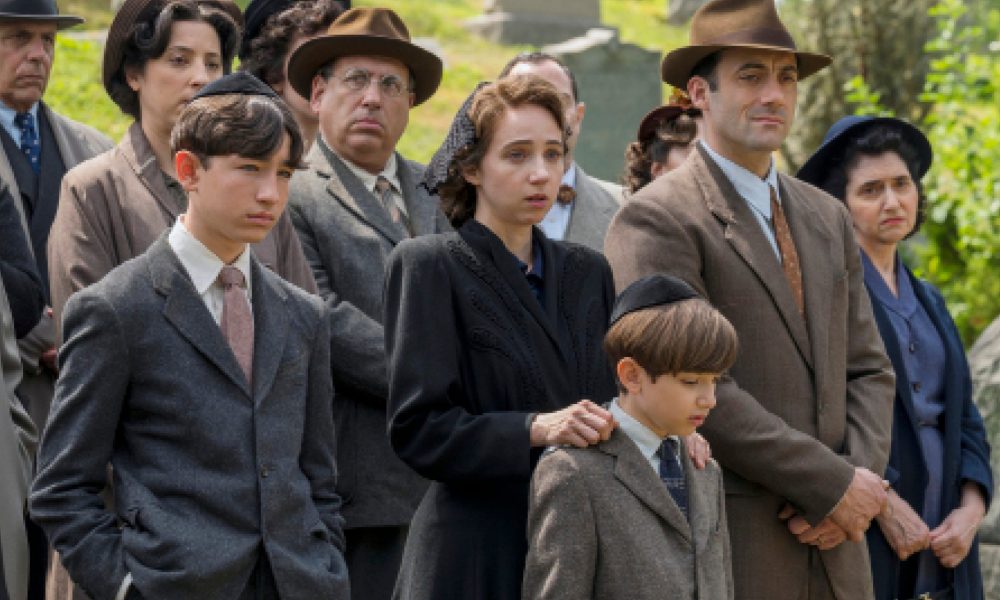
Morgan Spector, Zoe Kazan, Caleb Malis, Azhy Robertson in Phillip Roth’s The Plot Against America.
The question “How Jewish?” is explored still more tellingly in the character of Philip’s fictional older brother, Sandy, a teenage budding artist who worships Lindbergh and sketches portraits of the man his father deems anathema. To the fictional Sandy, Lindbergh is the bright, shining allure of his country. His father’s hatred of the hero-aviator challenges Sandy’s own dreams of his American future, like the yeshiva that taints a suburban Oz with the unseemly intrusion of a mini-shtetl in its midst. It’s an interesting juxtaposition to the scenes of Roth’s family on display in Here We Are, a new memoir by the writer’s friend Benjamin Taylor. In real life, Taylor tells us, Roth adored his older brother Sandy.
In the novel, as in the TV series, Roth’s choice of Lindbergh as America’s fascist president and agent of its tilt to Nazi Germany was a deft piece of historical rewrite. The pilot’s colossal fame makes the notion of his election a plausible fiction, even though in reality the Republicans ultimately nominated the internationalist Wendell Willkie in 1940 and lost. The pilot of the first solo trans-Atlantic flight was the son of a congressman; he was husband and father to what appeared to be a storybook family (this was long before the posthumous disclosure of his later infidelities: six children by three different German women) and father of a baby son whose kidnapping was the country’s most notorious crime, prosecuted in the country’s most publicized trial. Even my own father, who never bought an object of German manufacture after returning from World War II, on his 85th birthday measured the miraculous advances he had lived to see as stretching from Lindbergh’s flight to man’s walking on the moon. My mother offered as evidence of her uncle’s renown as a physician that even Lindbergh, no friend of the Jews, sought Dr. Liebowitz’s care.
David Simon, who created The Wire, and his collaborator on that masterpiece, Ed Burns, have kept true to Roth’s insistence on depicting Newark’s Jewish community minus the schmaltz. Yes, the Levin family is warm, hardworking, caring and modestly pious, but the people around them have adulterous affairs and commit petty crimes. And faced with the dazzling pilot-turned-president, who hosts the Nazi Foreign Minister von Ribbentrop at a White House dinner, where swastika banners hang alternating with the Stars and Stripes, some of the Jews in the series stay silent out of fear and some are mesmerized by the glamor of it all.
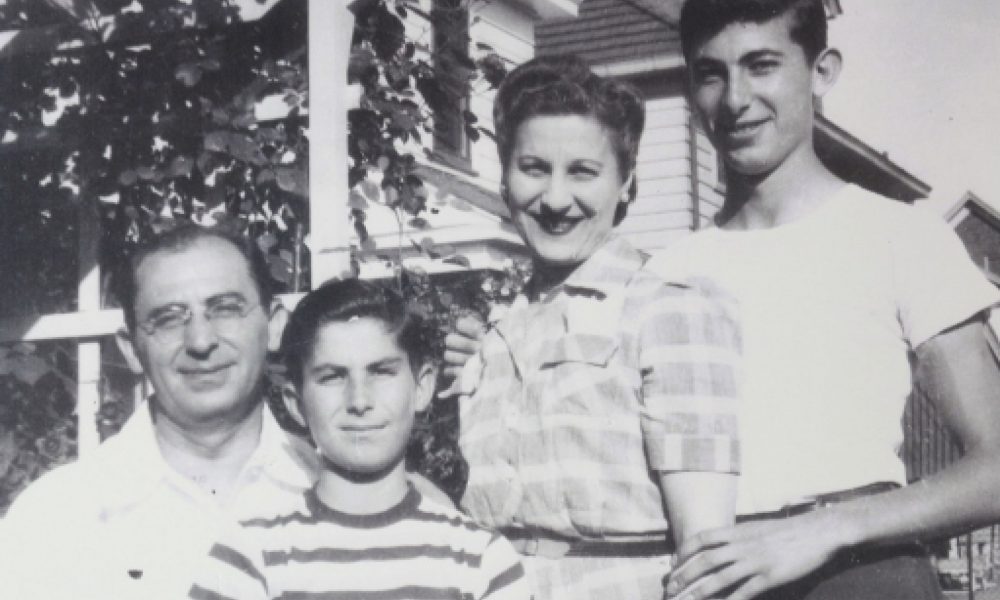
Philip Roth and his family in Newark.
Scenes such as that White House dinner, and one in which Lindbergh’s Secretary of Commerce Henry Ford vents his anti-Semitism, are given credibility by meshing the fiction with the convincingly realistic domestic struggles of the Levins. When I interviewed Roth in 2006 about the novel, he called it a kind of “false memoir.” The great historical backdrop was redrawn, but the family in the story was his own family, and the neighborhood was his neighborhood. In the TV show, actors Zoe Kazan and Morgan Spector are deeply convincing as his parents. I am not sure that John Turturro, who plays the pro-Lindbergh rabbi, has quite captured the monumentally pompous rabbinic self-regard of the Bengelsdorf created by Roth. In the novel, Rabbi Bengelsdorf has both a pulpit and a radio show, on which he once described his friendships with two other rabbis as virtually Olympian relationships: “It was fated: just as Socrates, Plato and Aristotle belonged together in the ancient world, so we belong together in the religious world.”
What I miss most in the HBO series is the voice of Roth’s narrator, a voice that can do English professor and borscht-belt tummler. It is a hard voice for a camera to compete with. I asked Roth (in what turned out to be an outtake from my interview) whether this book, which struck me as richly cinematic, might be right for a movie. He responded negatively, remarking on how badly he thought previous film adaptations of his work had gone. But the writer rethought, and, on balance, we should be grateful that we get to see his image of American anti-Semitism unleashed by presidential permission in the form of silence. Taylor, in his loving and wonderful little book about his best friend, counts The Plot Against America, American Pastoral (1997) and I Married a Communist (1998) as the books that elevated Roth to the level of great writer “when his novels became history-haunted.” I would add a special plug for The Human Stain (2000), which picked up on the conflicts of identity politics and campus liberalism before they became routine punditry-fodder.
Here We Are is not about Roth’s literary stature, but rather, about the close friendship between two seemingly very different men, separated by age—Taylor was almost 20 years Roth’s junior—and sexual orientation. Taylor is gay, while Roth was in his friend’s words “a sexual anarch” but very much a heterosexual. What we learn from Taylor about Roth fills many gaps for those of us who read him or, as in my case, knew him only slightly. Just as I recall mentally preparing every October for the “Philip Roth wins the Nobel Prize for Literature” story that I would insist on writing, he evidently suffered every October from the inevitable speculation. A great catastrophe of Roth’s life was his failed marriage to the actress Claire Bloom, a divorce that requires a word more hate-laden than the old standby “acrimonious.” Roth regarded Bloom’s tell-all memoir of their relationship as a betrayal, and he amassed reams of rebuttal that he evidently at one time hoped would be published. To Bloom’s allegation of Roth’s hypochondria, Taylor, who is not blind to his friend’s excesses, cites in rebuttal the real pains that afflicted Roth. From an army accident involving KP duty and a dropped kettle of potatoes came multiple back surgeries. The pain led him to fentanyl and other potent analgesics that left him with a drug problem in old age. Heart disease led to quintuple bypass surgery at age 56. He was often in mental pain as well: Taylor relates Roth’s 1993 breakdown and stint in a psychiatric hospital. Ever protective of his privacy, the writer deeply resented Bloom’s revelations about that and his drug-related crises.
One question Roth seems to have been untroubled by in his personal life was the one I first encountered in “Eli, The Fanatic”: “How Jewish?” Some of his most memorable characters produced exotic, conflicted answers. The actress Eve Frame of I Married a Communist (evidently his poison-penned caricature of Bloom) hid her Brooklyn Jewish roots from her adoring fans and her posh, often anti-Semitic friends. Coleman Silk, the aging classics professor of The Human Stain, hides his blackness in the false identity of a secular Jewish intellectual, in effect passing for off-white. Roth himself was fond of Jewish jokes and, despite the accusations of Jewish self-hatred that greeted his story “Defender of the Faith” (which I came to shortly after “Eli”) and his 1969 novel Portnoy’s Complaint, he harbored loving memories of his Jewish parents, his Jewish brother, his Jewish upbringing and his old Jewish neighborhood.
In our interview about The Plot Against America, I asked Roth whether he thought American Jews had avoided the pogroms and arrests he described in the novel because they had caught some lucky break, which spared them from what might easily have happened, or whether there was something about the American Jewish experience that was essentially different from the experience of Jews in Europe. Denying me a catchy sound bite, he answered my question thoughtfully. Yes, there is something essentially, markedly different here. And yes, we caught a lucky break and made the best of it. It was some of both. How Jewish.
Robert Siegel, a special literary correspondent for Moment, was host of NPR’s All Things Considered.
Moment Magazine participates in the Amazon Associates program and earns money from qualifying purchases.

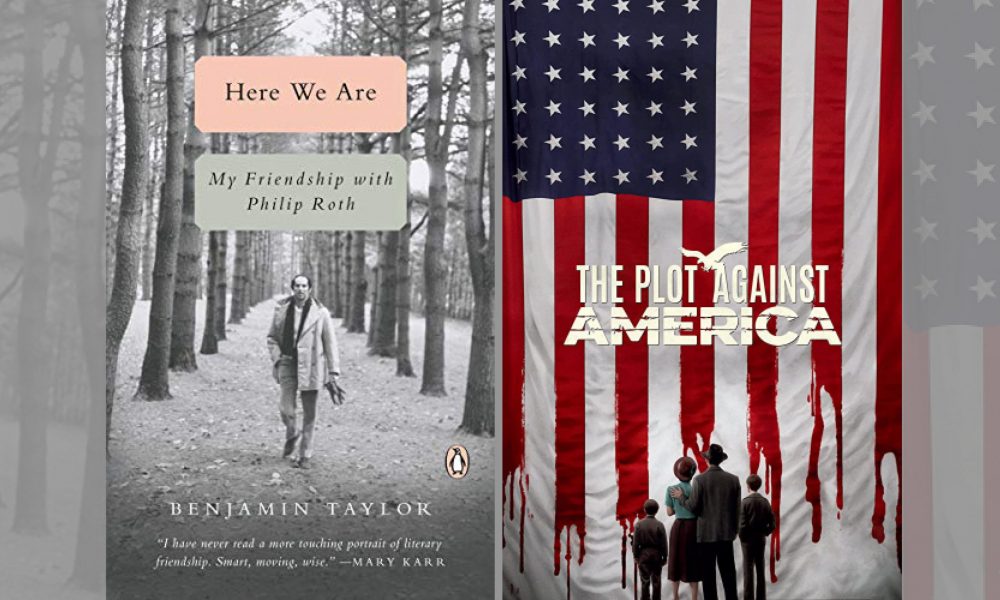

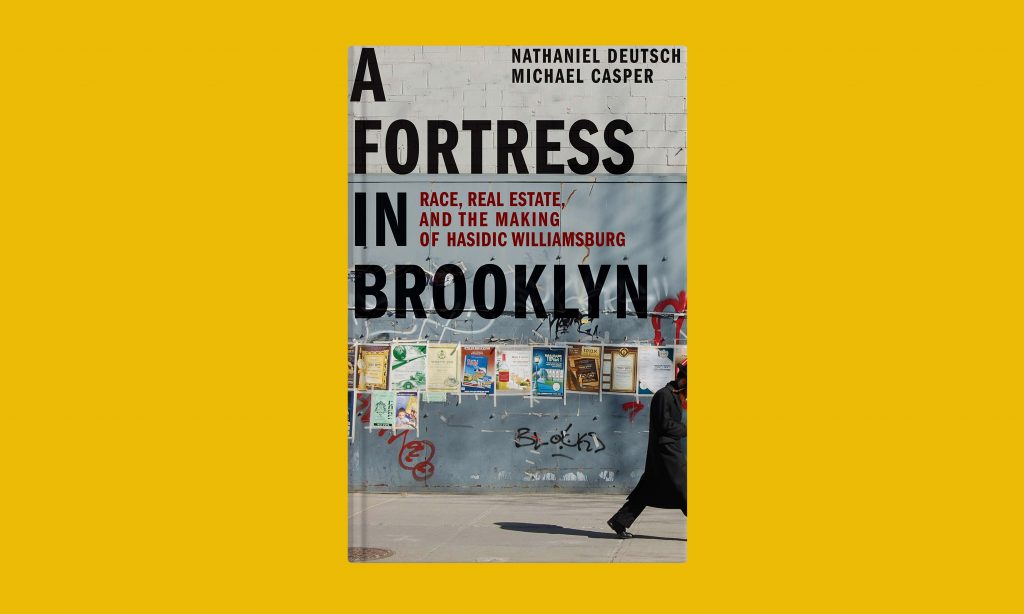
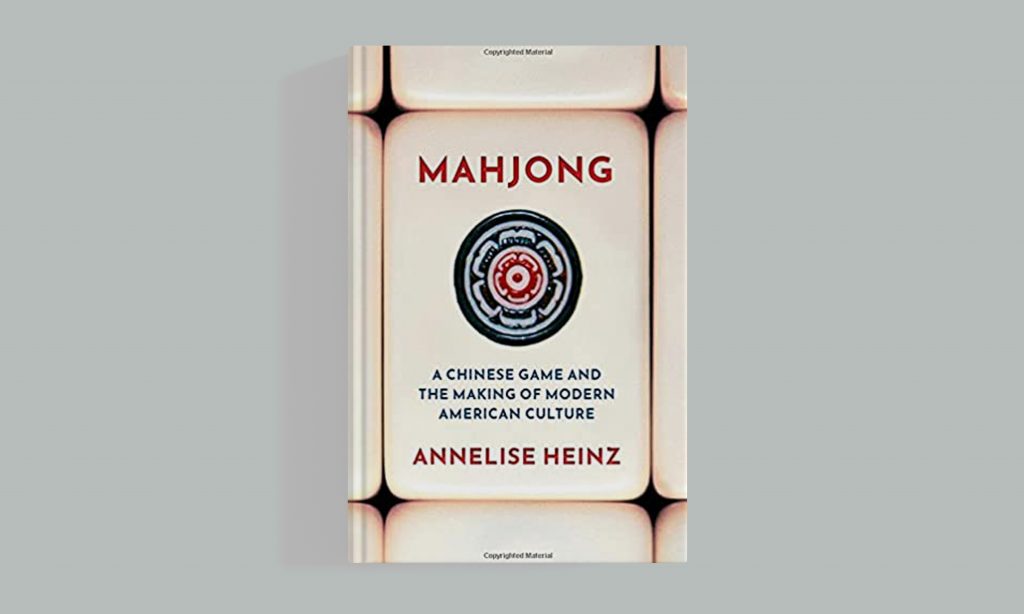

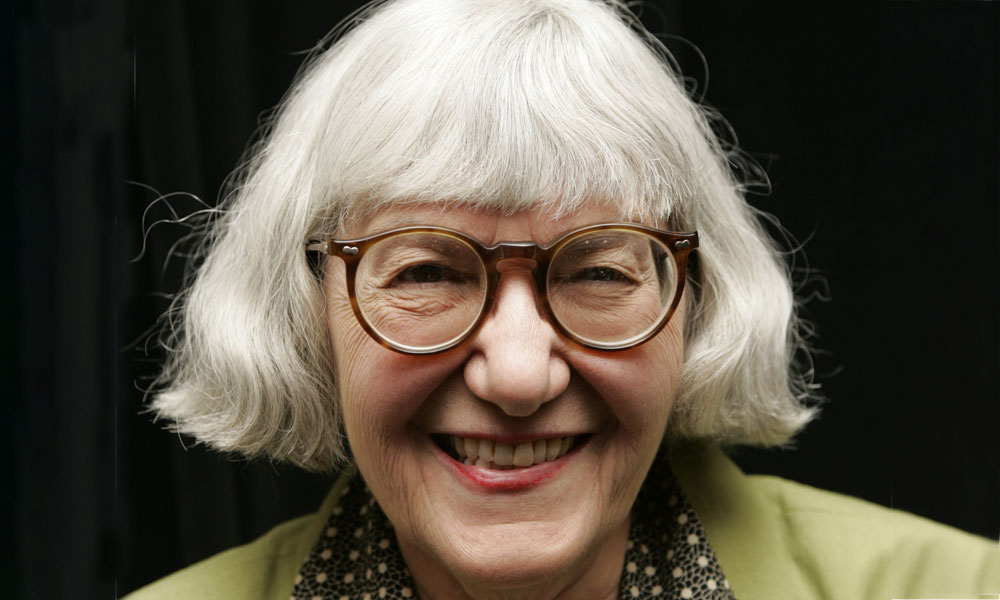
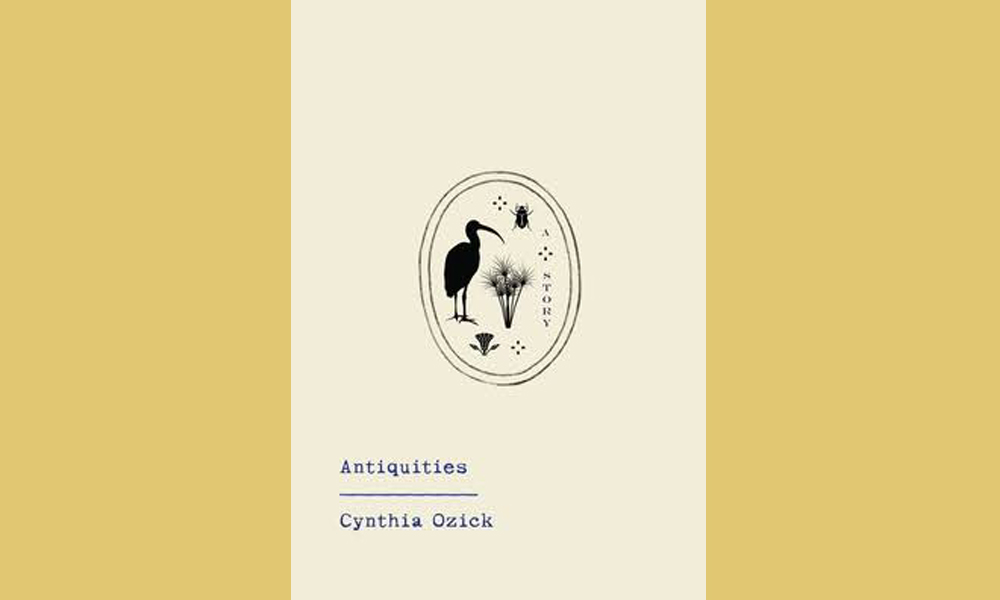




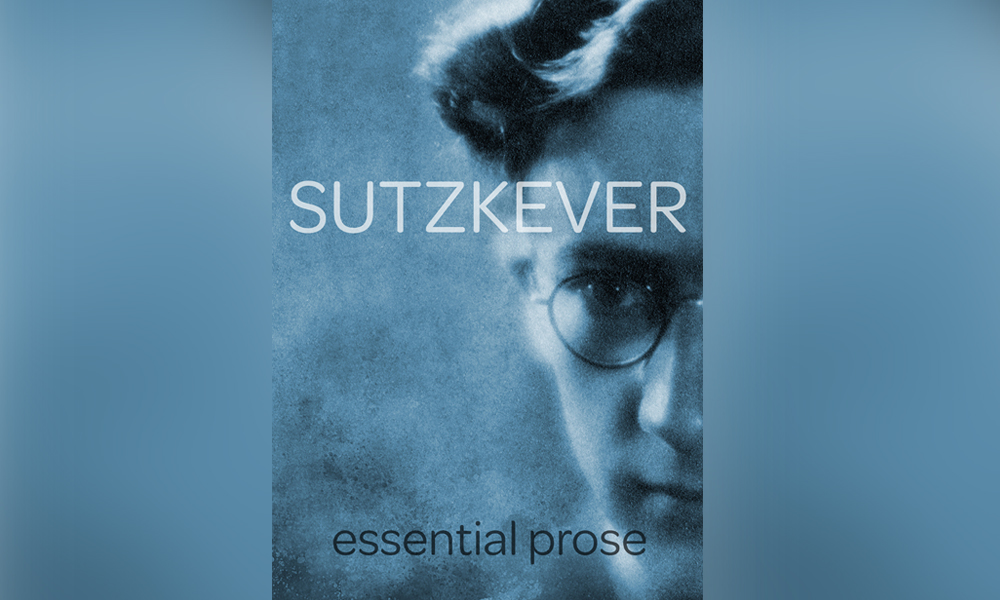
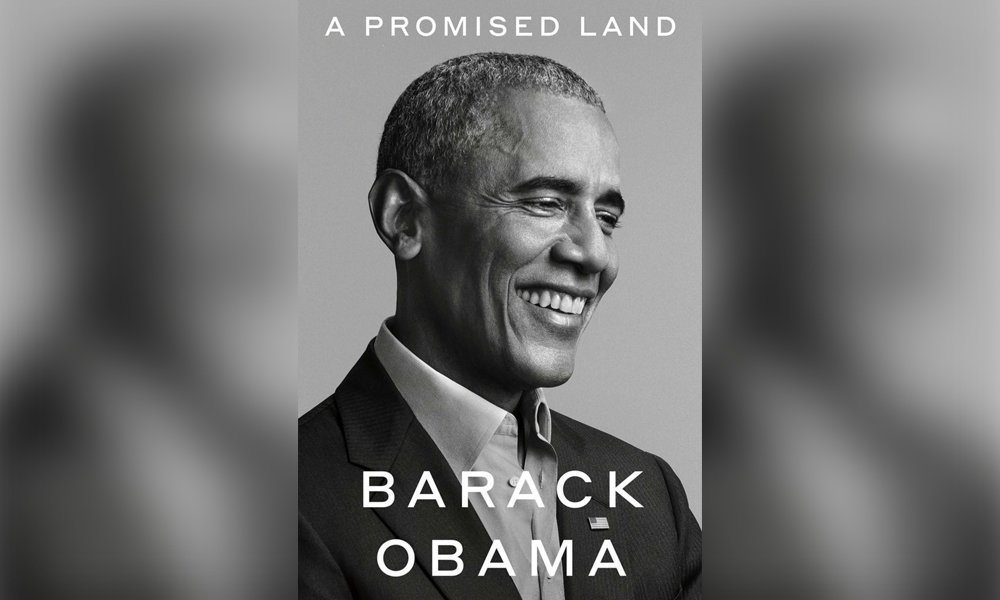
What a great and loving article Siegel has written for Moment. Roth always challenging the schizophrenia Jews have lived with in America in times if crisis, Siegel has given us a framework of fairness often denied Roth by literary critics. Thank you so very much.